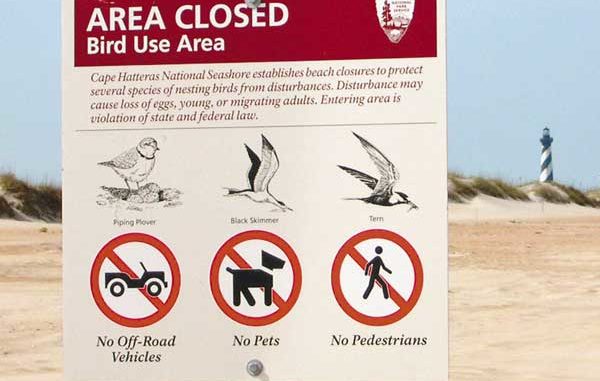
What really happened to cause the Cape Hatteras National Seashore to close beaches to ORVusers? North Carolina Sportsman takes a look.
The National Park Service closed Oregon Inlet beach, the Point at Buxton, and the south beach at Ocracoke to ORVs May 5 to protect nests of sea turtles, shorebirds and waterfowl.
The closure followed a consent decree approved by federal district court Judge Terrence Boyle and temporarily staved off a lawsuit nobody wanted. Judge Boyle seemed irked about the continued failure of NPS to manage all the resources of Cape Hatteras National Seashore, 30 years after given the charge.
His ruling cited the original implementing legislation establishing the Cape Hatteras National Seashore and compliance with the National Environmental Policy Act, the Endangered Species Act, the Migratory Bird Protection Act, and other statutes.
“The mandate to the NPS goes back to presidential orders under Nixon and Carter instructing the NPS to develop interim management plans as part of their duty to protect and preserve the parks and seashores for future generations,” said John Couch of the Outer Banks Preservation Association. “In 1978 the NPS issued a draft interim management plan for public comment.
“Following the Nixon and Carter directives, NPS had proposed to close the seashores to vehicles. During public hearings, Senator Jesse Helms and Representative Walter Jones, Sr., urged NPS to adopt an ORV-friendly plan alternative. The Sierra Club responded with a more protective recommendation to keep vehicles away from nesting sea turtles and birds.
“The NPS draft interim management plan died in D.C. and wasn’t resurrected until recently.
“Since 2007 the Interim ORV Management Plan has been discussed both before and after ‘Reg-Neg’ (see explanation below), but protected species management, with its protocols and strategies, has been handled solely by NPS with guidance from other federal agencies.
“That separate track, called the Interim Protected Species Management Protocols Plan, considered only the science and not the economics.”
NPS was advised by the U.S. Fish and Wildlife Service, the U.S. Geological Survey, the Audubon Society, whose members have been conducting bird counts to track population changes, and other experts to adopt specific protocols that had been successful in other parks with the same species declines. The science was available; the law was clear; and economics weren’t an issue.
The point was for NPS to develop the endangered species management plan under federal laws that protect the piping plover (threatened), sea turtles (threatened and endangered), and migratory shorebirds also in decline.
The Reg-Neg group of 30 individuals was set up to deal with ORV use and could consider economic impacts of beach use and restriction, but it hadn’t held any discussions of protected species. Maybe they’d get to that topic and maybe they would not.
Apparently the people who developed protocols for managing protected seashore species weren’t going to wait and this, at least, was not negotiable. And a surprise was brewing.
Couch said the Audubon people never mentioned they were going to sue to get protection measures established for migratory birds and sea turtles.
Walker Golder of N.C. Audubon disagreed and claimed Neg-Reg individuals were informed in advance.
Recreational user conflicts among surf fishermen, jet skiers and surfers are social and economic issues. The usual solution is separate users in time and space or, when particularly noxious, to keep them out altogether.
By with regard to the CAHA beaches, a lot of stake-holders were disputing rights and responsibilities based on the history of the national seashore, historic use of the beaches by recreational fishermen, and the authority of any agency to tell anyone what they could or could not do where they had been doing it all their lives.
The major stake-holders boiled down to the Audubon Society and the Defenders of Wildlife, who claim to speak for environmental preservation and wildlife uses, and the North Carolina Beach Buggy Association, the Cape Hatteras Anglers Club, and the Outer Banks Preservation Association, representing ORV users and other recreational users.
The recreational users were interested only in preserving their access to the beaches, and that’s all they wanted to discuss. Not everyone shared that view.
To get everyone around the table and talking to rather than at each other, the OBPA suggested negotiated rule-making or regulatory negotiation (reg-neg), a process used for developing management regulations on the west coast.
Reg-neg is a set of rules by which people exchange ideas within a given set of rules. Participants meet regularly to allow all sides to present and defend ideas and hear all other stake-holder objectives. Gradually. if not grudgingly, the hope is to develop a consensus.
Prodded by OBPA, the NPS determined a decision to use Reg-Neg would be a federal action requiring an Environmental Assessment, which might take a year.
After the EA was approved validating Reg-Neg as the means to the end, agreement seemed inevitable. But that’s where communications fell apart.
Most of the Reg-Neg committee’s 30 members assumed they were to discuss all issues, but in fact focused only on ORV use — at least at first. At the same time, the natural resources community, led by FWS, USGS, and Audubon North Carolina provided NPS with data on declines in protected wildlife and protocols to protect nests and birds and turtles already federally protected, as input to the Endangered Species Management Protocol Plan.
Everyone assumed NPS was putting recreational and protected species portions in its Interim Management Plan. When NPS finally announced it had the interim plan, there was nothing there.
That came to light when a reckless ORV driver at Oregon Inlet annoyed surf fishermen, who called the CAHA cops who pulled the guy over and gave him a ticket. However, the driver’s lawyer argued to the judge (Boyle) overseeing the national seashore case that NPS had no authority to ticket the defendant because there was no Interim Management Plan, only a vague statement that was silent on driving regulations and never approved by anyone.
The judge agreed, and the case was thrown out with a warning to NPS to get its act together.
NPS quickly got on the stick to spell out its authority at the CAHA beaches but again was a day late and a dollar short, spelling out rules for dune grass protection, ramp provisions and other issues but omitted protections for coastal birds and sea turtles covered by the Endangered Species Act and the National Migratory Bird Act.
The environmental community wasn’t pleased and out of patience. It threatened to sue in federal court if the NPS didn’t get its job done promptly.
The NPS blinked, decided not to go against the greens and was ready to cave in and let the court order them to do what they were supposed to do all along.
The Audubon Society and Defenders of Wildlife, agreeable to Reg-Neg for ORV regulation, wasn’t going to wait another three years while they said species continued to decline. They advised the other members of the Reg-Neg group, according to Golder (although Couch said they never did), and filed suit with Judge Boyle, this time represented by the Southern Environmental Law Center.
SELC argued the failure of the interim plan to protect bird and sea turtle nesting couldn’t wait for a solution three years down the road, and the NPS was mandated to enforce federal laws. Endangered species were in decline, SELC said, and ORV traffic was one of three principal impacts. ORV traffic, introduced predators and weather needing curtailing in key places at key times, said SELC’s suit.
NPS caved and wouldn’t even put up a defense, only a weak explanation.
Judge Boyle seemed inclined to rule for the plaintiffs but gave the parties time to compromise so he wouldn’t have to rule.
Any outcome of a suit, It was clear, would be challenged, perhaps overturned, and drag out for years, with additional damage to dwindling wildlife every season. Both sides preferred to settle their differences for a short period rather than being under an injunction for years during which the beaches could be completely closed.
The parties reached consensus on an interim plan that required a final plan in three years, which Judge Boyle said was enough time and not to expect any extensions.
Interference with endangered species was not on the table, according to FWS and the National Marine Fisheries Service, the agencies that enforce the Endangered Species Act.
Self interest avoided a total beach-driving closure — the parties agreed to drop the suit with the judge’s approval, and that’s where we are today.
Did the SELC and Audubon and Defenders of Wildlife back out of an agreement by going around Reg-Neg? Did they break the agreement and the law?
It depends upon whom one asks.
Reg-Neg was about the ORV management plan. NPS was supposed to develop an endangered species management plan. Both plans were supposed to be addressed in its Interim Management Plan but weren’t.
SELC and the plaintiffs argued the Interim Management Plan didn’t enforce legal protections for species, and that’s why they went to court, and NPS wouldn’t or couldn’t defend itself.
More information about the provisions of the consent decree is available www.CAHA.gov or www.obpa.org.
Here are some changes in beach use and reasons for the changes:
• Night driving will not be allowed on the beach from May 1 to November 15, the sea turtle nesting season, to protect females coming to the beach to lay eggs and to protect hatchings heading to the sea, both nighttime behaviors.
• Sea turtles ascend to the dune line, and any disturbance may send them scurrying back to the ocean without laying eggs. An incomplete ascent is a “false crawl” and could be caused by a scare or change of mind.
• The consent decree gets ORV drivers off the beaches after 10 p.m. and not back on before 6 a.m. to avoid spooking female turtles coming to lay eggs, and off the beaches during nighttime hatching when the baby turtles are heading toward moonlight and presumably the ocean.
• NPS biologists hunt for and mark nests and, in risky situations, move nests.
• Bird nesting also requires accommodation. ORVs can impact nesting birds by crushing nests and eggs and babies and frightening the parents into abandoning the young.
• The new rules are an imposition on ORV use but not a deterrent. ORV users still get to fish, just not everywhere all the time, but only when and where it won’t affect nesting, hatching and weaning.
• The most important ORV seasons occur during fall and winter and is unaffected by the rules.
• The parties have gotten much of what they wanted.
• There probably wouldn’t be an argument if bald eagles nested at CAHA, but piping plovers have the same protection as eagles.
• Jet ski activities will not be allowed and who can find fault with that?
The National Park Service Beach Access Report is distributed every Thursday. In addition, check www.nps.gov/caha for current information or call 252-473-2111 ext. 148.

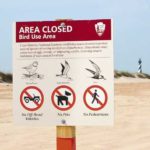
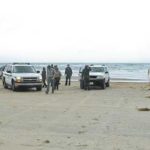
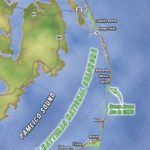

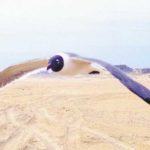


Be the first to comment